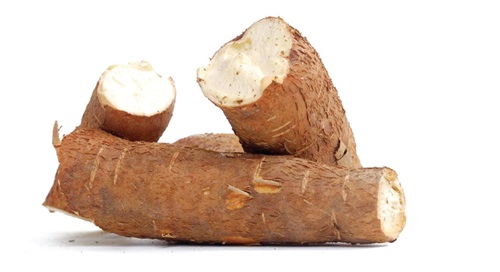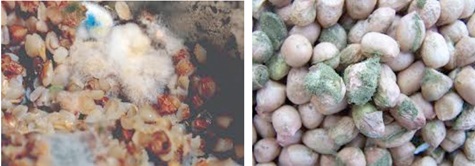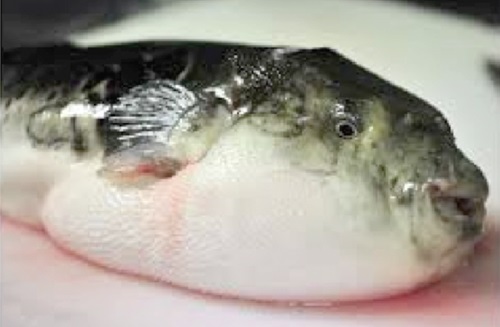
Natural food toxins: Our silent killers
The Ghanaian consumer perceives anything natural to be safe in oblivion and rather seems to concentrate on the harmful effects of synthetic chemicals, novel processing, irradiation, pesticide residue, etc.
Advertisement
They were prominent among consumers as notable sources of toxic materials in a survey performed in 2021. As difficult as it is to believe that our natural toxins equally or perhaps put us at more risk is unthinkable. Consumers may be unaware of or have low knowledge levels of the toxins that naturally occur in food.
Historically, we have been schooled on the potential toxicity of everything; where only the dose divides the toxic from the non-toxic.
Water, a universally acclaimed vital substance is toxic if a large quantity (4-5 litres) is consumed in a relatively short period (2-3 hours) and this often results in hyponatremia and subsequently cerebral oedema, seizures, and finally death as the pathogenesis of intoxication, according to scientists.

Cassava is a major contributor of cyanide in our foods
Food, even though nutritious and inevitable, may on some occasions pose threats to the consumer. Foods may contain both friendly and unfriendly microorganisms; these microorganisms are not harmful to the organisms themselves, but they may be toxic to other creatures, including humans when consumed.
Natural toxins are toxic compounds that are naturally produced by living organisms. When eaten, these toxins may cause deleterious several effects on human and/or animal subjects.
Their effects may include toxicity (poisonous) to the nervous system (brain and spinal nerves), hepatic and nephrons (liver and kidneys), cardiovascular and circulatory systems (heart and blood), and immunotoxic (poison to the immune system). Their effect may either be acute or chronic.
During periods of climate stress (drought or extreme humidity), plants and other microorganisms produce some toxins that are used as a natural defence mechanism against predators, insects or microorganisms. Interestingly, these toxins are not harmful to the organisms themselves but may be toxic to other creatures, including humans.
These chemical compounds have diverse structures and differ in biological function and toxicity.
Some toxins are produced by plants as a natural defence mechanism against predators, insects or microorganisms or as a consequence of infestation with microorganisms, such as mould, in response to climate stress (such as drought or extreme humidity).
Furthermore, toxicities from herbal medicinal preparations can be traced to plant toxins and high levels of phytochemicals which go a long way to causing problems for our internal organs (kidneys, liver, etc.) if not properly checked and regulated.
Other sources of natural toxins are microscopic algae and plankton in oceans or sometimes in lakes that produce chemical compounds that are toxic to humans but not to fish or shellfish that eat these toxin-producing organisms.
When people eat fish or shellfish that contain these toxins, illness can rapidly follow. Some of the most commonly found natural toxins that can pose a risk to our health are described below.
Fungal origin
Mycotoxins
Mycotoxins are naturally occurring toxic compounds produced by certain types of moulds. Moulds that can produce mycotoxins grow on numerous foodstuffs such as cereals, dried fruits, nuts and spices. Mould growth can occur before harvest or after harvest, during storage, on/in the food itself often under warm, damp and humid conditions.
Most mycotoxins are chemically stable and survive food processing. The effects of food-borne mycotoxins can be acute with symptoms of severe illness and even death appearing quickly after the consumption of highly contaminated food products.
Long-term effects on the health of chronic mycotoxin exposure include the induction of cancers and immune deficiency. Many have been classified as potent carcinogens by the International Agency for Cancer Research (IARC).
Mycotoxin Clearance from Human Factor VII - BioProcess International The Promise of GMOs: Mycotoxins – GMO Building Blocks Contamination due to mycotoxins is a serious food safety and security concern that has had confrontational monetary consequences, as well as health penalties in agricultural regions across the globe, especially sub-Saharan Africa.
The danger involved in their association with food commodities is their obstinate persistence and their ability to stay potent even through rigorous processing and treatment as a majority of them are very fatal and stable and thus are of significant importance in food safety. These mycotoxins accrue finally in the liver of human bodies in an active state as a relocation from animal bodies via poisoned animal products.

Toxicogenic fungal infection impacting mycotoxins in our foods
Several hundred different mycotoxins have been acknowledged (over 400 and counting) but the most commonly observed mycotoxins that present a concern to human health and livestock include aflatoxins, ochratoxin A, patulin, fumonisins, zearalenone and nivalenol/deoxynivalenol.
Mycotoxins appear in the food chain as a result of mould infection of crops both before and after harvest. Exposure to mycotoxins can happen either directly by eating infected food or indirectly from animals that are fed contaminated feed, in particular from milk.
The symptoms of a mycotoxicosis (poisoning due to fungi toxin) depend on the type of mycotoxin; the amount and duration of the exposure; the age, health and sex of the exposed individual; and many poorly understood synergistic effects involving genetics, dietary status and interactions with other toxic elements.
Thus, the severity of mycotoxin poisoning can be compounded by factors such as vitamin deficiency, caloric deprivation, alcohol abuse and infectious disease status.
Furthermore, poisoning from fungal toxins can heighten vulnerability to microbial diseases, worsen the effects of malnutrition, and interact synergistically with other toxins.
Poisonous mushrooms
The ingestion of Amanitins, muscimol, muscarine, and other toxins which may be present in wild mushroom species such as Amanita phalliodes, Lepiota brunneioncarnata, Cortinarius orellanus shown in the picture etc., can lead to nausea, diarrhoea, confusion, visual abnormalities, salivation, and hallucinations.
Six to twenty-four hours or more after eating mushrooms, symptoms start to appear. Fatal poisoning is typically accompanied by a slow onset of symptoms that are quite severe and have a toxic impact on the neurological, liver, and kidney systems.
The poisons are not rendered inactive by cooking or peeling. Any wild mushrooms should be avoided unless they have been positively identified as non-poisonous. Mushroom lovers are advised to eat only familiar mushrooms and NOT look-alikes, especially when they go hunting during these rainy seasons.
Notwithstanding, to avoid all unnecessary doubts, one could purchase mushrooms from the list of domesticated mushrooms such as Pleurotus sp. (oyster mushrooms), oil palm mushroom (Domo) etc.
Plant Origin
Solanines and chaconine
Solanines and chaconine, which are glycoalkaloids, are naturally occurring poisons found in all Solanaceae plants, which include tomatoes, potatoes and eggplants. Although levels are often low, potato sprouts, bitter-tasting peel and green sections, as well as green tomatoes, have higher concentrations.
In reaction to stresses, including bleeding, Ultraviolet exposure, pathogens, and attacks from insect pests and herbivores, the plants create poisons. It's vital to store potatoes in a dark, cool, and dry place and to avoid eating the green or sprouting parts to limit the development of solanines and chaconine.
Cyanogenic glycosides
Cassava | Description, Origin, Poison, Taste, Benefits, & Facts | Britannica
At least 2000 plant species generate cyanogenic glycosides, which are phytotoxins (toxic chemicals made by plants). Several of these species are consumed as food in various parts of the world.
In particular, sorghum, almonds, stone fruits, bamboo roots and cassava are significant sources of cyanogenic glycosides.
A cyanogenic plant's potential toxicity essentially hinges on the likelihood that its consumption will result in cyanide concentrations lethal to exposed humans.
Clinical symptoms of acute cyanide intoxication in people can include rapid breathing, low blood pressure, nausea, vomiting, diarrhoea, mental confusion, cyanosis with twitching, convulsions and terminal coma.
When a person's cyanide level is too high, they may die from cyanide poisoning. Death due to cyanide poisoning can occur when the cyanide level exceeds the limit an individual can detoxify.
Down memory lane, in the history of Ghana around 1983 when there was a severe famine, many lives were lost due to the consumption of a different species of cassava, which looked so much like the edible species. It was conjectured to contain high levels of cyanide in the root tubers and caused toxicities.
Furocoumarins
Numerous plants, including carrots and ones that are closely related to carrots and parsley, celery roots, citrus plants (lemon, lime, tangerine, oranges, and grapefruit), and some therapeutic plants, contain these poisons. Stress-related toxins, such as physical injury to the plant, cause furocoumarins to be secreted.

Pufferfish
In those who are vulnerable, some of these poisons may result in digestive issues. Due to their phototoxic properties, furocoumarins can lead to serious skin responses when exposed to Ultraviolet A rays.
Such reactions have been noted following the intake of substantial amounts of specific vegetables having high levels of furocoumarins, however they primarily occur after cutaneous exposure.
Lectins
The poisons known as lectins are present in many different varieties of beans, but red kidneys, in particular, have the highest quantities.
Even just four or five uncooked beans might result in severe nausea, vomiting and diarrhoea. The dry beans must be soaked for at least 12 hours and then aggressively cooked in water for at least 10 minutes to eliminate the lectins.
This procedure has already been utilised on canned kidney beans, allowing for immediate usage.
Pyrrolizidine alkaloids
Pyrrolizidine Alkaloids (PAs) are toxins produced by an estimated 600 plant species. The main plant sources are the families Boraginaceae, Asteraceae and Fabaceae. Many of these are weeds that can grow in fields and contaminate food crops.
PAs can cause a variety of adverse health effects; they can be acutely toxic and of main concern is the DNA-damaging potential of certain PAs, potentially leading to cancer. They are known for inducing and aggravating hepatocellular carcinoma (liver cancer).
As are stable during processing and have been detected in herbal teas, honey, herbs and spices, and other food products, such as cereals and cereal products. Human exposure is estimated to be low, however.
Due to the complexity of the subject and the large number of related compounds, the overall health risk has not been fully evaluated yet. Guidance is under development by the Food and Agriculture Organisation/World Health Organisation Codex Committee on Contaminants in Food on management strategies to prevent PA-containing plants from entering the food chain.
Aquatic biotoxins
Toxins formed by algae in the ocean and freshwater are called algal toxins. Algal toxins are generated during blooms of particular naturally occurring algal species. Shellfish such as mussels, scallops, and oysters are more likely to contain these toxins than fish.
Algal toxins can cause diarrhoea, vomiting, tingling, paralysis, and other effects in humans, other mammals or fish. The algal toxins can be retained in shellfish and fish or contaminate drinking water. They have no taste or smell and are not eliminated by cooking or freezing.
Another example is ciguatera fish poisoning (CFP) which is caused by consuming fish contaminated with dinoflagellates that produce ciguatoxins.
Some fish known to harbour ciguatoxins include barracuda, black grouper, dog snapper and king mackerel. Symptoms of ciguatera poisoning include nausea, vomiting and neurologic symptoms, such as a tingling sensation on fingers and toes. There is currently no specific treatment for ciguatera poisoning.
Animal origin
Elderly couple dies after eating poisonous pufferfish in Malaysia | CNN
Pufferfish
The pufferfish, sometimes referred to as blowfish, toadfish, or "gede" or "poponawoe" in Ewe, is the second-most venomous animal on the globe. There are around One Hundred and Twenty different species of pufferfish that are known, and every one of them is poisonous due to a chemical called tetrodotoxin.
One pufferfish contains enough poison to kill 30 adult humans. Despite the puffer fish's toxic content, several tribes and races, like Korea and Japan, regard its meat as a delicacy.
The meat of the pufferfish, known as "fugu" in Japan, is a delicacy that can only be cooked by highly skilled and licensed chefs who are aware that one poor cut almost always results in the customer's death.
Fishermen and fishmongers in Ghana are aware of pufferfish as a deadly fish that can be fatal if improperly prepared. Recently, in Alavanyo in the Volta Region, five people were reported dead and several more were hospitalised after allegedly ingesting a fish known as a pufferfish.
After swallowing puffer fish in the Volta Region, four more people died and several others were in severe condition in the hospital.
Additionally, after ingesting the toxic pufferfish, two people were confirmed deceased at Abotanso in the Afram Plains North District of the Eastern Region.
The deaths and drawbacks associated with the consumption of pufferfish have been the subject of scattered reports around the nation.
The Head of the Fish Health Unit of the Fisheries Commission has made some efforts to urge the public to be extra careful when it comes to Pufferfish as it is even more poisonous than cyanide (sodium or potassium cyanide used as a poison or in the extraction of gold and silver).
Snake venoms
Snake meat eating has been en-vogue in recent times in Ghana and has been used to prepare several dishes. It is revered among wealthy and well-respected citizens of the land.
Snake is endowed with some natural toxins also known as venoms. During the preparation of this snake meat, careful removal of the glands that produce and store these venoms must be ensured to prevent contact with the snake meat. Additionally, it is known that some tissues of the snake may possess these venoms.
Snake venoms are toxic to the internal organs; the brain and spinal cord, blood and circulatory system, liver and kidneys, respiratory system, optic system and paralysis, etc.
How can one minimise the health risks from natural toxins?
It is crucial to remember that natural poisons can be found in a wide range of various crops and foods. Natural toxin levels in a typical balanced, nutritious diet are much below the threshold for acute and chronic poisoning.
People are encouraged: not to assume that if something is 'natural' it is automatically safe;
• throw away bruised, damaged, or discoloured food, and in particular mouldy foods;
• throw away any food that does not smell or taste fresh, or has an unusual taste; and
• Only eat mushrooms or other wild plants that have definitively been identified as non-poisonous.
The writer is Acting Dean and Associate Professor of School of Sports and Exercise Medicine
University of Health and Allied Sciences
Email- [email protected]




